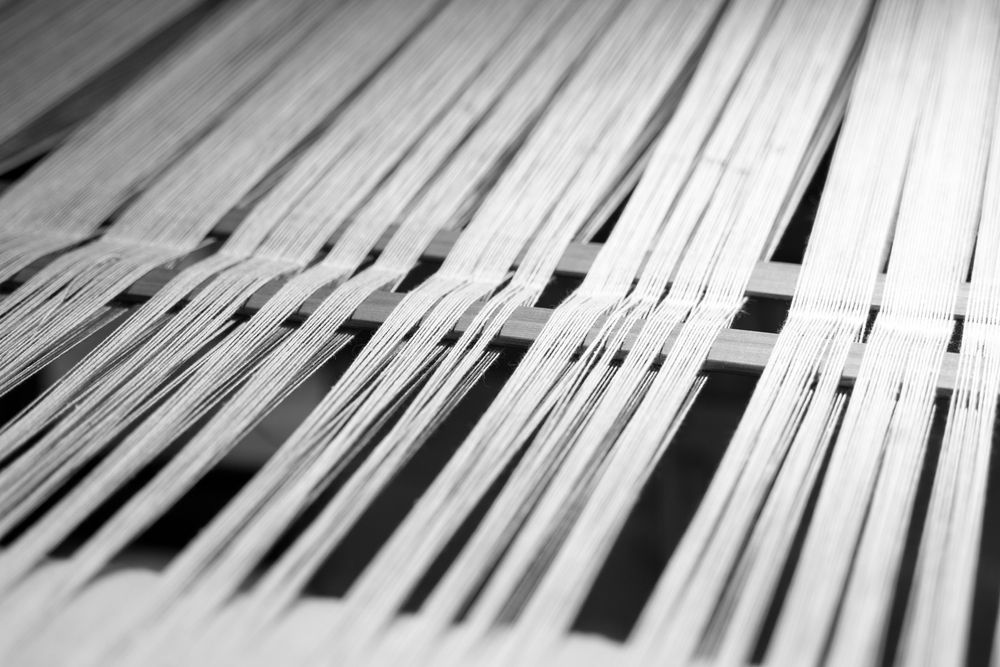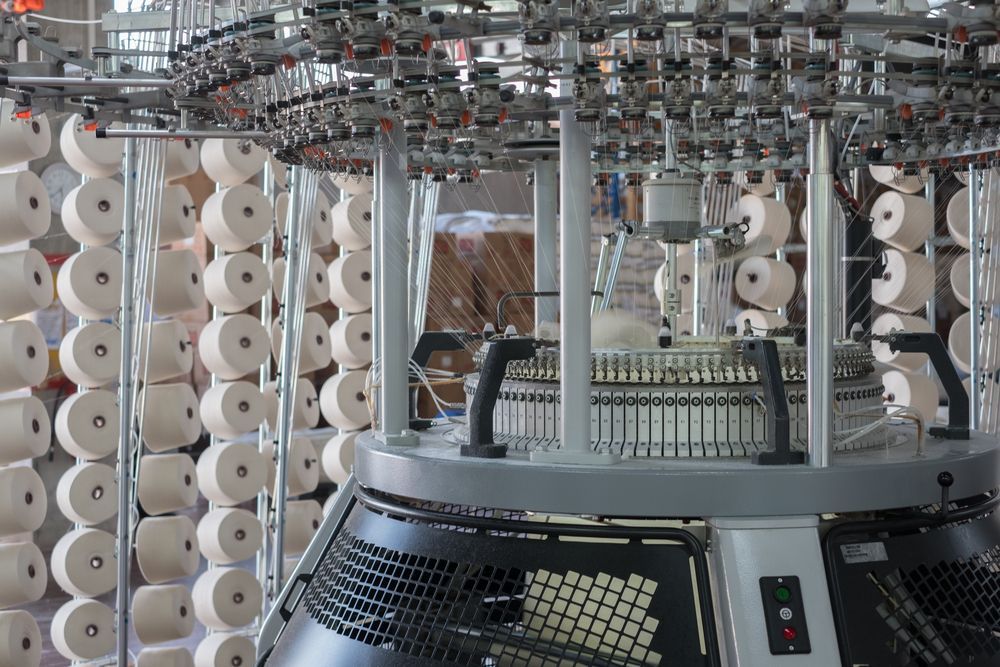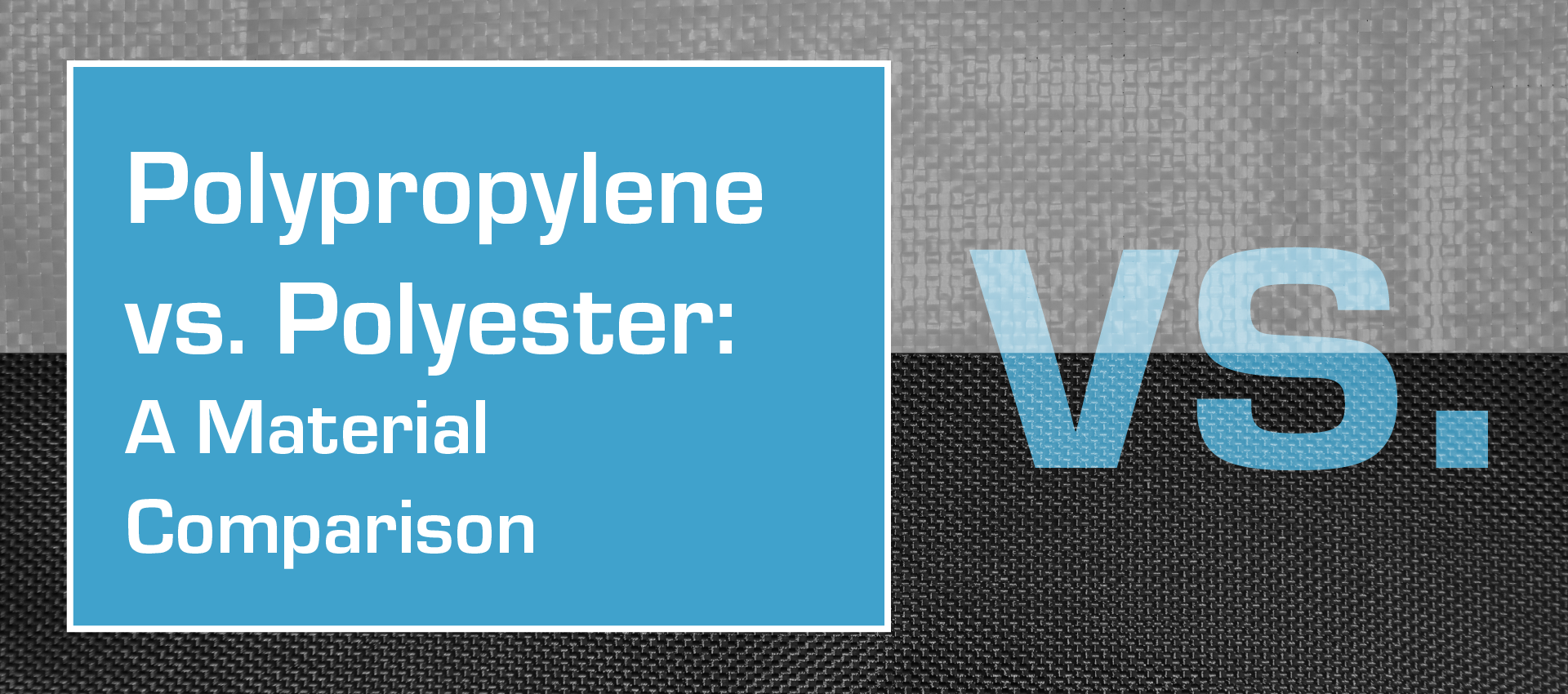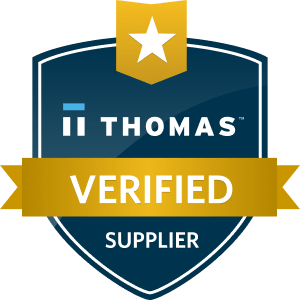Weaving vs Knitting: Key Differences Explained

When you have custom fabric needs for your company's products the goal is to make sure you're getting quality and value. To do that you may need to decide between weaving or knitting when choosing a fabric. Here's what to know.
What is Weaving?
Weaving is a popular way to create fabric. It involves lacing separate threads together at right angles, which results in a strong and stable fabric that doesn't have a lot of stretch. Upholstery is one example of fabric weaving.
What is Knitting?
Knitting, unlike weaving, uses a single piece of yarn to make loops and create a fabric that has more stretch but slightly less stability. Clothing such as sweaters are typically created through knitting.
Difference Between Weaving & Knitting
The biggest differences between weaving vs knitting are stability and flexibility. Both fabrics can be excellent choices but the way they're going to be used is very important.
Comparing Woven vs Knit Fabrics
If your company is looking for a fabric to cover and enclose a product, it may be very different from the fabric needed to protect and contain another product. Overall, when you need durability, weaving can be a better option. If you're seeking stretch and flexibility, knitting could be the best choice.
Temperature
Woven fabrics generally don't "breathe" as well as knitted fabrics. However, they're better at blocking wind and insulating products from cold or heat. A woven fabric would perform better for outdoor use than a knitted fabric, which would likely last longer indoors.
Elasticity & Stretch
A woven fabric is going to be far less elastic than a knitted one and won't stretch much, if at all. It doesn't have the "give" that a knitted fabric has, which is why knits are often used for clothing and woven fabrics are used for draperies, upholstery, and other goods.
Fold & Wrinkle Resistance
A knitted fabric will be more resistant to folding and wrinkling and will recover better than its woven counterpart. If you need fabric that will spend time folded or otherwise stored away, knit options will perform better.
Tear Resistance
Woven fabrics will generally resist tearing more than knitted fabrics. Especially for outdoor fabrics that will be exposed to the elements, woven options will typically have more durability.
Can You Use the Same Type of Fabric for Both Weaving & Knitting?
If you're using yarn the answer is yes, you can use the same type of fabric for knitting and weaving. However, there are also different fabric types that will work better for weaving vs knitting, so you want to be sure you're making an informed choice when you purchase products that are knitted or woven.

How are Woven & Knit Fabrics Measured?
Woven and knit fabrics are measured by denier, which is the linear mass density of its fibers. The lower the denier, the finer the fabric. Thread count, thickness, and weight can also be used to measure both types of fabrics.
Have Specific Fabric Requirements? Let Our Team Tailor a Solution for You
Get in touch with us today at Carolina CoverTech for all your custom fabric needs. As a leader in creative design and development of items that cover, protect, contain, and enclose we can meet your specifications and ensure you have the fabric that's right for your company and products.




